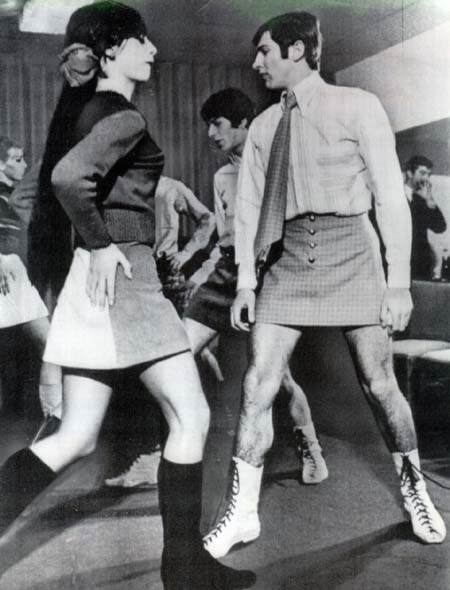| ECON 232 Chapter 3 UNDERSTANDING INDIVIDUAL MARKETS: DEMAND AND
SUPPLY |
This chapter provides a basic, but rather detailed introduction
to how markets operate as well as an introduction to demand and supply
concepts. Both demand and supply are defined and illustrated; determinants
of demand and supply are listed and explained. The concept of equilibrium
and the effects of changes in demand and supply on equilibrium price and
quantity are explained and illustrated. The chapter also includes brief
discussions of supply and demand factors in resource markets and the importance
of the ceteris paribus assumption.
|
I. Markets Defined
A. A market is an institution or mechanism that brings together
buyers (demanders) and sellers (suppliers) of particular goods and services.
1. A market may be local, national, or international in scope.
2. Some markets are highly personal, face-to-face exchanges; others
are impersonal and remote.
3. This chapter concerns purely competitive markets with a large number
of independent buyers and sellers.
4. Product market involves goods and services.
5. Resource market involves factors of production.
B. The goal of the chapter is to explain the way in which markets adjust
to changes and the role of prices in bringing the markets toward equilibrium.
|
II. Demand
A. Demand is a schedule that shows the various amounts of a
product consumers are willing and able to buy at each specific price in
a series of possible prices during a specified time period.
1. Example of demand schedule for corn is Table 3-1.
2. The schedule shows how much buyers are willing and able to purchase
at five possible prices.
3. The market price depends on demand and supply.
4. To be meaningful, the demand schedule must have a period of time
associated with it.
B. Law of demand is a fundamental characteristic of demand behavior.
1. Other things being equal, as price increases, the corresponding
quantity demanded falls.
2. Restated, there is an inverse relationship between price and quantity
demanded.
3. Note the “other things being constant” assumption refers to consumer
income and tastes, prices of related goods, and other things besides the
price of the product being discussed.
4. Explanation of the law of demand:
a. Diminishing marginal utility: The decrease in added satisfaction
that results as one consumes additional units of a good or service, i.e.,
the second “Big Mac” yields less extra satisfaction (or utility) than the
first.
b. Income effect: A lower price increases the purchasing power of money
income enabling the consumer to buy more at lower price (or less at a higher
price).
c. Substitution effect: A lower price gives an incentive to substitute
the lower-priced good for now relatively higher-priced goods.
C. The demand curve:
1. Illustrates the inverse relationship between price and quantity
(see corn example, Figure 3-1).
2. The downward slope indicates lower quantity (horizontal axis) at
higher price (vertical axis), higher quantity at lower price.
D. Individual vs. market demand:
1. Transition from an individual to a market demand schedule is accomplished
by summing individual quantities at various price levels.
2. Market curve is horizontal sum of individual curves (see corn example,
Tables 3-2, 3-3 and Figure 3-2).
E. There are several determinants of demand or the “other things,” besides
price, which affect demand. Changes in determinants cause changes
in demand.
1. Table 3-4 provides additional illustrations. (Key Question
2)
a. Tastes—-favorable change leads to increase in demand; unfavorable
change to decrease.
b. Number of buyers—the more buyers lead to an increase in demand;
fewer buyers lead to decrease.
c. Income—more leads to increase in demand; less leads to decrease
in demand for normal goods. (The rare case of goods whose demand
varies inversely with income is called inferior goods).
d. Prices of related goods also affect demand.
i. Substitute goods (those that can be used in place of each other):
The price of the substitute good and demand for the other good are directly
related. If price of Budweiser rises, demand for Miller should increase.
ii. Complementary goods (those that are used together like tennis balls
and rackets): When goods are complements, there is an inverse relationship
between the price of one and the demand for the other.
e. Expectations—consumer views about future prices, product availability,
and income can shift demand.
2. A summary of what can cause an increase in demand:
a. Favorable change in consumer tastes.
b. Increase in the number of buyers.
c. Rising income if product is a normal good.
d. Falling incomes if product is an inferior good.
e. Increase in the price of a substitute good.
f. Decrease in the price of a complementary good.
g. Consumers expect higher prices in the future.
3. A summary of what can cause a decrease in demand:
a. Unfavorable change in consumer tastes,
b. Decrease in number of buyers,
c. Falling income if product is a normal good,
d. Rising income if product is an inferior good,
e. Decrease in price of a substitute good,
f. Increase in price of a complementary good,
g. Consumers’ expectations of lower prices, or incomes in the future.
F. Review the distinction between a change in quantity demanded caused
by price change and a change in demand caused by change in determinants.
|
Have tastes changed over time?

|

|

|

|
Changes in tastes for men's clothes have shifted demand curves for different
kinds of clothes. |
III. Supply
A. Supply is a schedule that shows amounts of a product a producer
is willing and able to produce and sell at each specific price in a series
of possible prices during a specified time period.
1. A supply schedule portrays this such as the corn example in Table
3-5.
2. Schedule shows what quantities will be offered at various prices
or what price will be required to induce various quantities to be offered.
B. Law of supply:
1. Producers will produce and sell more of their product at a high
price than at a low price.
2. Restated: There is a direct relationship between price and quantity
supplied.
3. Explanation: Given product costs, a higher price means greater profits
and thus an incentive to increase the quantity supplied.
4. Beyond some production quantity producers usually encounter increasing
costs per added unit of output.
Note: A detailed explanation of diminishing returns is
probably not necessary at this point and can be delayed until a later consideration
of the costs of production.
C. The supply curve:
1. The graph of supply schedule appears in Figure 3-4, which graphs
data from Table 3-6.
2. It shows direct relationship in upward sloping curve.
D. Determinants of supply:
1. A change in any of the supply determinants causes a change in supply
and a shift in the supply curve. An increase in supply involves a
rightward shift, and a decrease in supply involves a leftward shift.
2. Six basic determinants of supply, other than price. (See examples
of curve shifts in Figure 3-4 and summary Table 3-7 and Key Question 5.)
a. Resource prices—a rise in resource prices will cause a decrease
in supply or leftward shift in supply curve; a decrease in resource prices
will cause an increase in supply or rightward shift in the supply curve.
b. Technology—a technological improvement means more efficient production
and lower costs, so an increase in supply or rightward shift in the curve
results.
c. Taxes and subsidies—a business tax is treated as a cost, so decreases
supply; a subsidy lowers cost of production, so increases supply.
d. Prices of related goods—if price of substitute production good rises,
producers might shift production toward the higher priced good, causing
a decrease in supply of the original good.
e. Expectations—expectations about the future price of a product can
cause producers to increase or decrease current supply.
f. Number of sellers—generally, the larger the number of sellers the
greater the supply.
E. Review the distinction between a change in quantity supplied due
to price changes and a change or shift in supply due to change in determinants
of supply.
|
Improvements in Technology

|

|

|

|

|

|

|
How do changes in technology affect the costs of production and the amount
that can be produced? |
IV. Supply and Demand: Market Equilibrium
A. Market equilibrium occurs at the point where quantity supplied equals
the quantity demanded. This is the equilibrium price and quantity.
1. At prices above this equilibrium, note that there is an excess quantity
or surplus.
2. At prices below this equilibrium, note that there is an excess quantity
demanded or shortage.
B. Market clearing or market price is another name for equilibrium
price.
C. Graphically, note that the equilibrium price and quantity are where
the supply and demand curves intersect (See Figure 3-5). This is
an IMPORTANT point to recognize and remember. Note that it is NOT
correct to say supply equals demand!
D. Rationing function of prices is the ability of competitive forces
of supply and demand to establish a price where buying and selling decisions
are coordinated. (Key Question 7)
|
V. Changes in Supply and Demand, and Equilibrium
A. Changing demand with supply held constant:
1. Increase in demand will have effect of increasing equilibrium price
and quantity
(Figure 3-6a).
2. Decrease in demand will have effect of decreasing equilibrium price
and quantity
(Figure 3-6b).
B. Changing supply with demand held constant:
1. Increase in supply will have effect of decreasing equilibrium price
and increasing quantity (Fig 3-6c).
2. Decrease in supply will have effect of increasing equilibrium price
and decreasing quantity (Fig 3-6d).
C. Complex cases—when both supply and demand shift (see Table 3-9):
1. If supply increases and demand decreases, price declines, but new
equilibrium quantity depends on relative sizes of shifts in demand and
supply.
2. If supply decreases and demand increases, price rises, but new equilibrium
quantity depends again on relative sizes of shifts in demand and supply.
3. If supply and demand change in the same direction (both increase
or both decrease), the change in equilibrium quantity will be in the direction
of the shift but the change in equilibrium price now depends on the relative
shifts in demand or supply.
D. A Reminder: Other things equal:
1 Demand is an inverse relationship between price and quantity demanded,
other things equal (unchanged).
2. Supply is a direct relationship showing the relationship between
price and quantity supplied, other things equal (unchanged).
3. It can appear that these rules have been violated over time,
when tracking the price and the quantity sold of a product such as salsa
or coffee.
4. Many factors other than price determine the outcome.
5. If neither the buyers nor the sellers have changed, the equilibrium
price will remain the same.
6. The most important distinction to make is to determine if a change
has occurred because of something that has affected the buyers or something
that is influencing the sellers.
7. A change in any of the determinants of demand will shift the demand
curve and cause a change in quantity supplied. (See Figure 3?6 a &
b)
8. A change in any of the determinants of supply will shift the supply
curve and cause a change in the quantity demanded. (See Figure 3?6 c &
d)
|
VI. “Other Things Equal” Revisited
A. Remember that the “laws” of supply and demand depend on
the assumption that the “other things” or “determinants” of demand and
supply are constant.
B. Confusion results if “other things” (determinants) change and one
does not take this into account. For example, sometimes more is demanded
at higher prices because incomes rise, but if that fact is ignored, the
law of demand seems to be violated. If income changes, however, there
is a shift or increase in demand that could cause more to be purchased
at a higher price. In this example, “other things” did not remain
constant.
|
VII. Application: Pink Salmon
A. This is an example of simultaneous changes in both supply
and demand.
B. An increase in supply occurs because of more efficient fishing boats,
the development of fish farms and new entrants to the industry.
C. There is a decrease in demand because of changes in consumer preference,
and an increase in income shows pink salmon to be an inferior good.
D. Note that whenever you change both supply and demand, you
can never tell what happens to both the price and quantity. You can
tell what happens to one or the other, but the change to the remaining
variable is always indeterminate.
|
VIII. LAST WORD: “Ticket Scalping: A Bum Rap?”
A. “Scalping” refers to the practice of reselling tickets at
a higher-than-original price, which happens often with athletic and artistic
events. Is this “ripping off” justified?
B. Ticket re-sales are voluntary—both buyer and seller must feel that
they gain or they would not agree to the transaction.
C. “Scalping” market simply redistributes assets (tickets) from those
who value them less than money to those who value them more than the money
they’re willing to pay.
D. Sponsors may be injured, but if that is the case, they should have
priced the tickets higher.
E. Spectators are not damaged, according to economic theory, because
those who want to go the most are getting the tickets.
F. Conclusion: Both seller and buyer benefit and event sponsors
are the only ones who may lose, but that is due to their own error in pricing
and they would have lost from this error whether or not the scalping took
place.
|

